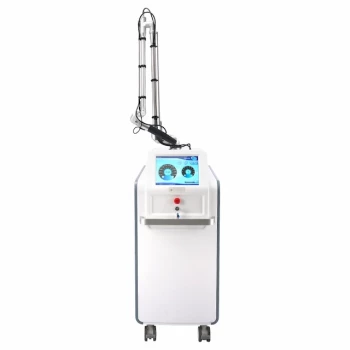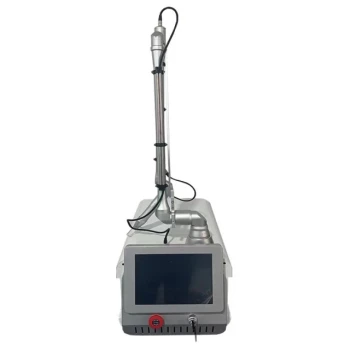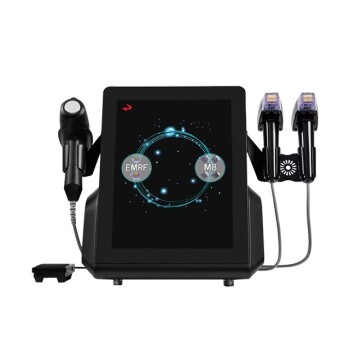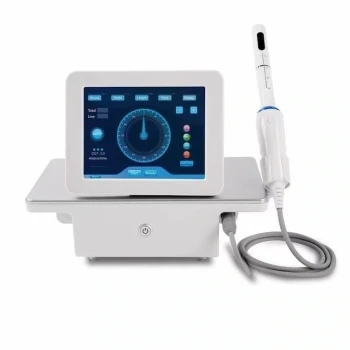One of the most common and critical applications for the Neodymium-doped Yttrium Aluminum Garnet (Nd:YAG) laser is in the field of ophthalmology. This solid-state laser is a foundational tool for performing precise, non-invasive surgeries deep inside the human eye.
The Nd:YAG laser's unique ability to deliver a highly focused, powerful pulse of near-infrared light allows it to create microscopic "incisions" within the eye without damaging the surrounding transparent tissues, revolutionizing specific ophthalmic procedures.
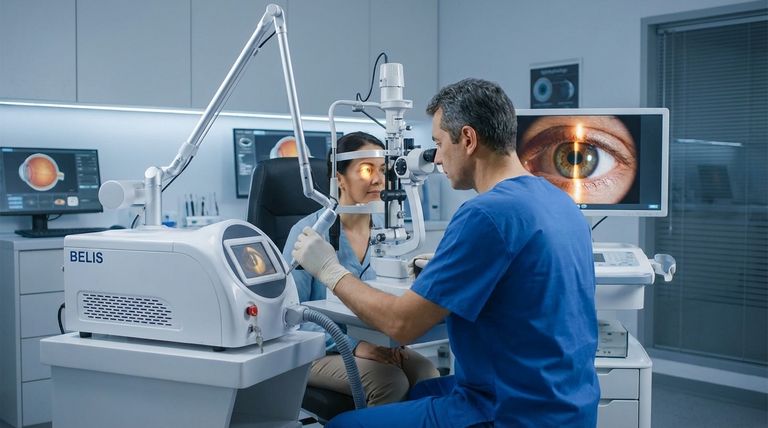
The Principle of Operation: Precision Without Incision
The effectiveness of the Nd:YAG laser in eye surgery stems from a specific physical principle and a carefully chosen wavelength. It doesn't burn or vaporize tissue like other medical lasers.
The 1064 nm Wavelength
The laser emits light at a 1064 nanometer (nm) wavelength. This is in the near-infrared spectrum, which is crucial because it can pass harmlessly through the cornea and lens at the front of the eye.
The Power of Photodisruption
The laser operates on the principle of photodisruption. It delivers an extremely short, high-energy pulse to a tiny focal point.
This intense energy ionizes the tissue, creating a small plasma bubble. The rapid expansion of this plasma generates a shockwave that mechanically cuts or disrupts the targeted tissue with incredible precision.
Minimal Collateral Damage
This combination of a transparent wavelength and localized photodisruption allows surgeons to perform procedures on structures like the lens capsule or the iris without making a single external incision.
Key Applications in Ophthalmology
While it has other industrial and medical uses, the Nd:YAG laser is most famously associated with two specific, common outpatient procedures.
Posterior Capsulotomy
This is the most frequent use. After cataract surgery, the thin membrane (posterior capsule) behind the new lens implant can become cloudy, a condition known as posterior capsular opacification (PCO).
The Nd:YAG laser is used to create a clear opening in this clouded capsule, instantly restoring vision. The procedure is painless and takes only a few minutes.
Peripheral Iridotomy
For patients with or at risk of narrow-angle glaucoma, the laser is used to create a tiny hole in the iris (the colored part of the eye).
This opening allows intraocular fluid to circulate more freely, relieving the dangerous pressure buildup that characterizes this form of glaucoma.
Understanding the Trade-offs
While remarkably safe and effective, the procedure is not without its considerations. The power of photodisruption requires expert handling.
Risk of Intraocular Pressure (IOP) Spikes
The microscopic shockwave and resulting debris from the procedure can temporarily clog the eye's drainage system, causing a brief spike in eye pressure. This is typically monitored and managed by the ophthalmologist.
Potential for Lens Pitting
If the laser is not focused with perfect accuracy, it can inadvertently pit or mark the surface of the intraocular lens implant. While often visually insignificant, it underscores the need for surgical precision.
Specialized Training is Essential
Operating an Nd:YAG laser system safely requires deep knowledge of ocular anatomy and the physics of photodisruption. Its use is restricted to highly trained medical professionals.
How This Informs Your Perspective
Understanding the specific application of a technology is key to appreciating its design and limitations. The Nd:YAG laser is a perfect example of matching a tool to a problem.
- If your primary focus is on medical technology: Recognize that the Nd:YAG laser's success in ophthalmology is a direct result of its non-invasive, mechanical cutting action (photodisruption) rather than thermal energy.
- If your primary focus is on physics or engineering: The laser's 1064 nm wavelength was chosen specifically for its ability to transmit through biological tissue, demonstrating how critical wavelength selection is for any targeted application.
The Nd:YAG laser remains a cornerstone of modern ophthalmology because it solves a complex surgical problem with unparalleled elegance and precision.
Summary Table:
| Application | Primary Use | Key Benefit |
|---|---|---|
| Posterior Capsulotomy | Clearing clouded capsule after cataract surgery | Instant vision restoration, no incision |
| Peripheral Iridotomy | Treating narrow-angle glaucoma | Relieves intraocular pressure, prevents vision loss |
| Wavelength | 1064 nm (near-infrared) | Passes through eye tissues harmlessly |
| Mechanism | Photodisruption | Creates microscopic incisions without heat |
Elevate Your Medical Aesthetic Practice with BELIS
As a clinic or premium beauty salon specializing in advanced treatments, precision and safety are paramount. BELIS specializes in professional medical aesthetic equipment, including advanced laser systems that deliver the reliability and accuracy you demand. Our technology empowers you to offer cutting-edge, non-invasive procedures with confidence.
Ready to integrate superior technology into your practice? Contact our experts today to discover how BELIS equipment can enhance your service offerings and patient outcomes.
Visual Guide
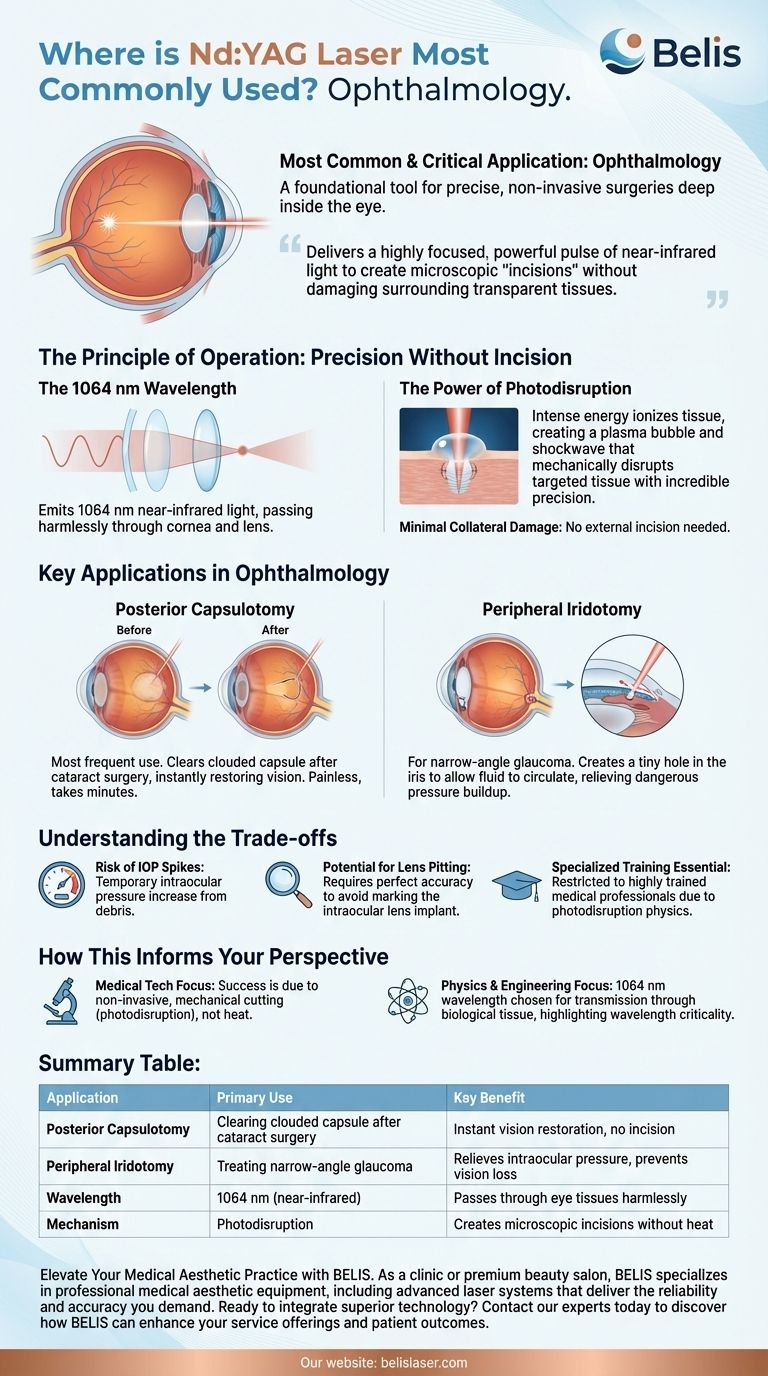
Related Products
- Q Switch Nd Yag Laser Machine Tattoo Removal Nd Yag Machine
- Clinic Use IPL and SHR Hair Removal Machine with Nd Yag Laser Tattoo Removal
- Diode Laser SHR Trilaser Hair Removal Machine for Clinic Use
- 7D 12D 4D HIFU Machine Device
- Trilaser Diode Hair Removal Machine for Beauty Clinic Use
People Also Ask
- How much does a laser tattoo removal machine cost? Choose the Right Tech for Your Clinic
- How long does it take to recover from Nd:YAG laser treatment? A Timeline for Every Procedure
- What are Q-switched lasers commonly used for? Remove Tattoos & Pigment with Precision
- What are the disadvantages of Q switching? Trade-offs in Pulse Control, Cost, and Beam Quality
- What are the disadvantages of Q-switch laser? Managing Risks for Safe Treatment










